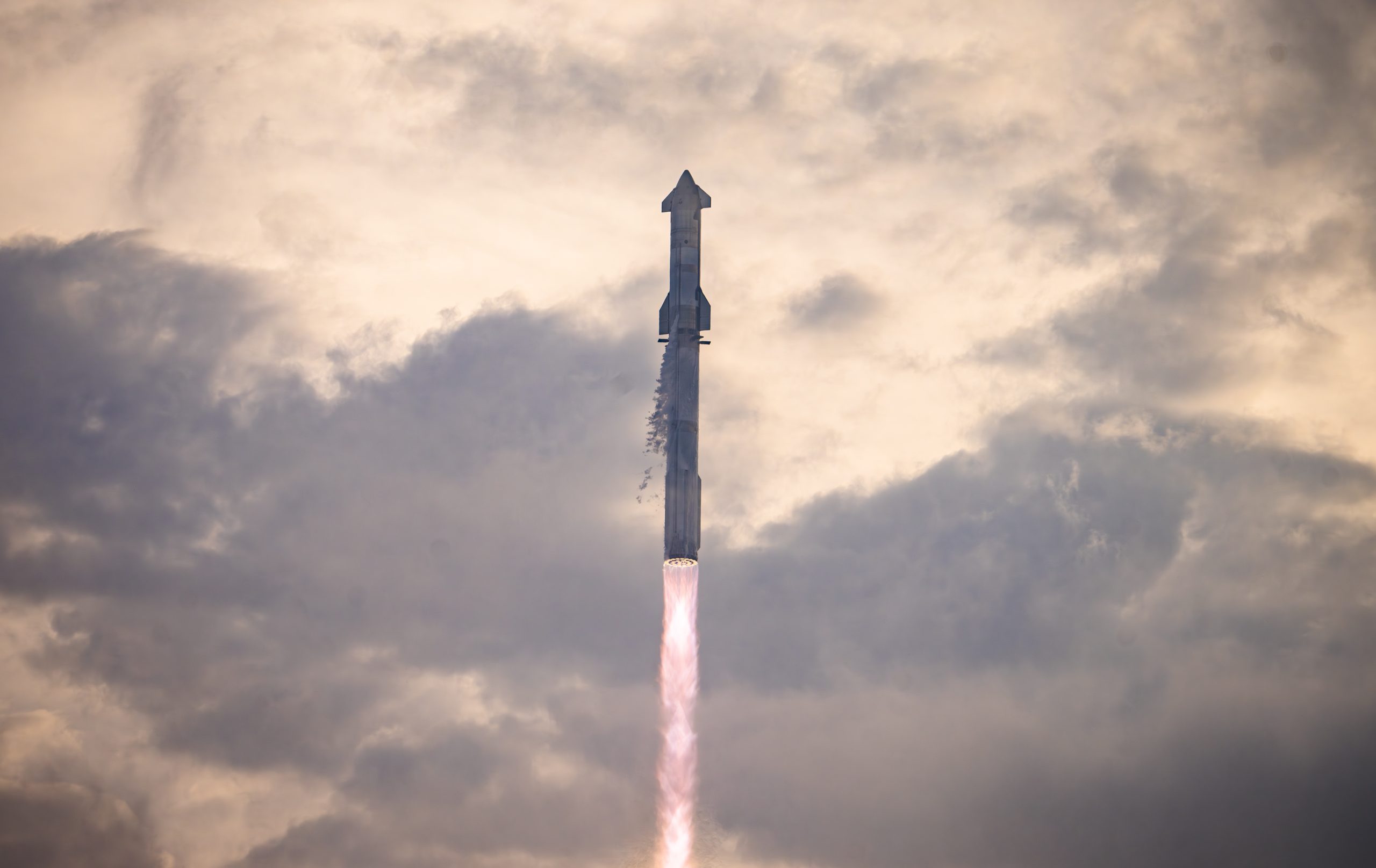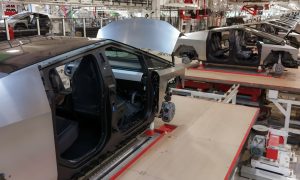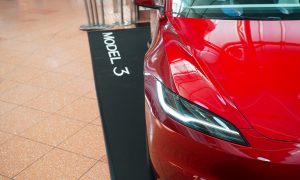SpaceX was successful in its third test flight of the largest rocket ever as Starship took to the skies at 8:25 am CT from Starbase, Texas.
The massive rocket made it further than ever during its third flight, including successful stage separation and atmospheric re-entry.
Liftoff of Starship! pic.twitter.com/FaNcasuKaq
— SpaceX (@SpaceX) March 14, 2024
The 33 Raptor engines powered Booster 10 with Ship 28 stacked on top all the way through its portion of the flight, never losing one engine. Two minutes and 50 seconds into the flight, Booster 10 and Ship 28 went through the hot staging maneuver flawlessly.
Starship’s Raptor engines have ignited during hot-staging separation. Super Heavy is executing the flip maneuver pic.twitter.com/T593ACilyD
— SpaceX (@SpaceX) March 14, 2024
Booster 10 then relit some of its engines to perform the boost backburn toward a landing area just East of the launch pad in the Gulf of Mexico. The booster made it all the way through the burn and re-oriented itself to a vertical position as it plunged through the atmosphere and used its giant grid fins to help stabilize the vehicle.
During the final moments of the re-entry, the forces on the vehicle became too much, and around the 2 km mark, the booster engine attempted to light for the landing burn, but it appears a few failed, and the booster was lost shortly after.
While Booster 10 was plunging back through the atmosphere, Ship 28 continued to fly perfectly, burning all 6 Raptor engines to reach orbital velocity. The ships’ engines shut down just over eight and a half minutes into flight and were officially in space, coasting between the Florida Keys and Cuba on its way to its planned re-entry over the Indian Ocean.
Starship is coasting in space pic.twitter.com/ZFUXMUkufW
— SpaceX (@SpaceX) March 14, 2024
During the coast phase, SpaceX completed multiple in-flight tests, such as opening and closing the payload bay, or the pez door, as they put it. Following that, the rocket then performed a fuel transfer demonstration, moving fuel from the header tanks into the main tanks. This was the first time they had done this while in orbit, but according to Gwynne Shotwell, SpaceX’s president and COO, they are waiting to officially confirm this.
SpaceX had intended to perform a re-light of a Raptor engine while in space, however, they elected to skip that and attempt this during a future mission.
Pez door checkout complete, door closing, and HD views are over @Starlink pic.twitter.com/Kmb2SpMVTu
— SpaceX (@SpaceX) March 14, 2024
Ship 28 then began atmospheric entry 46 minutes into the mission. Thanks to the Starlink connection, SpaceX was able to provide amazing views of the plasma build-up around the ship, something that is generally never seen as the plasma blocks the signal on smaller vehicles.
Starship re-entering Earth’s atmosphere. Views through the plasma pic.twitter.com/HEQX4eEHWH
— SpaceX (@SpaceX) March 14, 2024
Just over 49 minutes into the flight, during peak heating, the Starship data connection was lost with both Starlink and TDRS (Tracking and Data Relay satellites), the former being used for all vehicles in space, including the Crew Dragon capsule.
The on-screen telemetry stopped at a speed of 25,707 km/h at a height of 65 km. SpaceX said that with both signals dropping at the same time, it is likely the ship broke up during re-entry and did not make the planned intact splashdown.
While neither Booster 10 nor Ship 28 made it 100% to their planned splashdown, this third test flight was a massive win for SpaceX, and the company will look to complete the fourth flight test within a couple of months.
Questions or comments? Shoot me an email at rangle@teslarati.com, or Tweet me @RDAnglePhoto.











